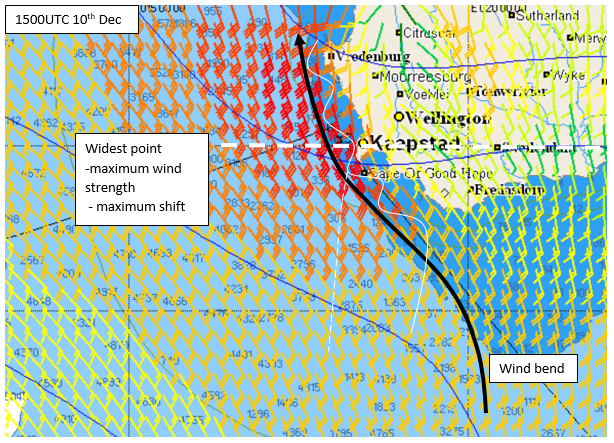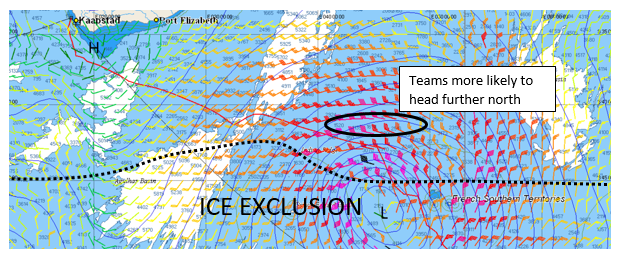The ‘Big Leg’ is performing already!
On Friday the Volvo Ocean Race village had its opening time delayed as gusts of 60 knots were expected, and the boats were recording 40-45 knots moored not so quietly on the dock!
I can almost feel the nerves and trepidation of the sailors as they build up into this leg. Those that have been there before talk excitedly about getting out into the downwind conditions and the best sailing while wincing at the thought of how cold and wet it is. Those that haven’t been there have no concept and only the tales to go on.
Straight into the fire
The wind has settled a little from the ‘village closing’ strengths of the days leading up to the start but teams will be heading out upwind into what some will call survival conditions. Expect to see maximum reefs and a J3 headsail and probably a battle against sea sickness for many in the first 24 hours.
After the starting loop where preservation of sails will be key, the teams will be heading off upwind trying to make the most of the accelerated wind and wind bend around and a little beyond the Cape of Good Hope.
It is likely that the teams will be trying to make the most of the wind, but manoeuvres will be costly and more so for some teams than others. Rather than short tacking, it’s likely the teams will be lining up to hit the Cape of Good Hope and then potentially work the shoreline there to get the inside before heading south – or go slightly early and head south from the Cape of Good Hope to get to and through the ridge first.
Traversing the ridge
The first 12 hours are going to be full on, not only because of the wind but also because the teams will be trying to pick their position for the high pressure ridge that they will all be sailing into.
The goal is ultimately to get south, to get across the ridge and into the new breeze, to position themselves to start picking up the low pressures that roll around the bottom of the planet – much like the last half of Leg 2. So picking the moment to go from full on the wind to cracked sheets and heading south could prove the first key decision. 24 hours after start time it is likely that there will be a reasonable mileage split in positioning and teams could be in as light as 5 KT of breeze.
The shift and pressure favour a southerly move.
Setting up for the onion
Once across the ridge the goal is to position the boat for the low pressure systems, to ride it to Melbourne. Here is where it gets interesting, we are looking at a fast, explosively developing secondary low pressure, deepening behind the fleet on Tuesday and chasing the fleet along.
Wind strengths in the grib files are showing in excess of 60 knots mean wind strength gusting to more and routings want to steer the boats towards the centre of the low to the stronger winds to make the most of the wind shift.
However, the ice exclusion zone limits the opportunity to do that and doing any manoeuvres in that much wind is high risk; never mind actually sending the boat towards that much wind. Teams will have discussed where their limits are: on average when the wind starts going over 40+knots on the grib you start looking at alternatives. They will be racing in survival mode, and no doubt those with experience will come out on top after these first 5 days.
The second secondary low
Secondary what?! A low pressure system that develops along the frontal system of an already established low pressure. What we really need to understand is they are unpredictable and are going to dominate the early days of this Leg.
No sooner have the teams survived the first low pressure (which was a secondary low), another secondary low looks set to start to develop in front of the fleet. Currently it doesn’t show signs of establishing itself. It is most likely to act as a road block allowing the fleet to compress back together. Expect to see some subtle north-south positioning creating leaderboard changes. North looks safest at this point, but anything can change.
With conditions being so changeable with fast moving systems, let’s check in with the fleet in 5 days to see who is holding onto those double points, how they have managed to get there and what the second half holds.
Current predictions suggest teams might just make it ashore for Christmas!
















